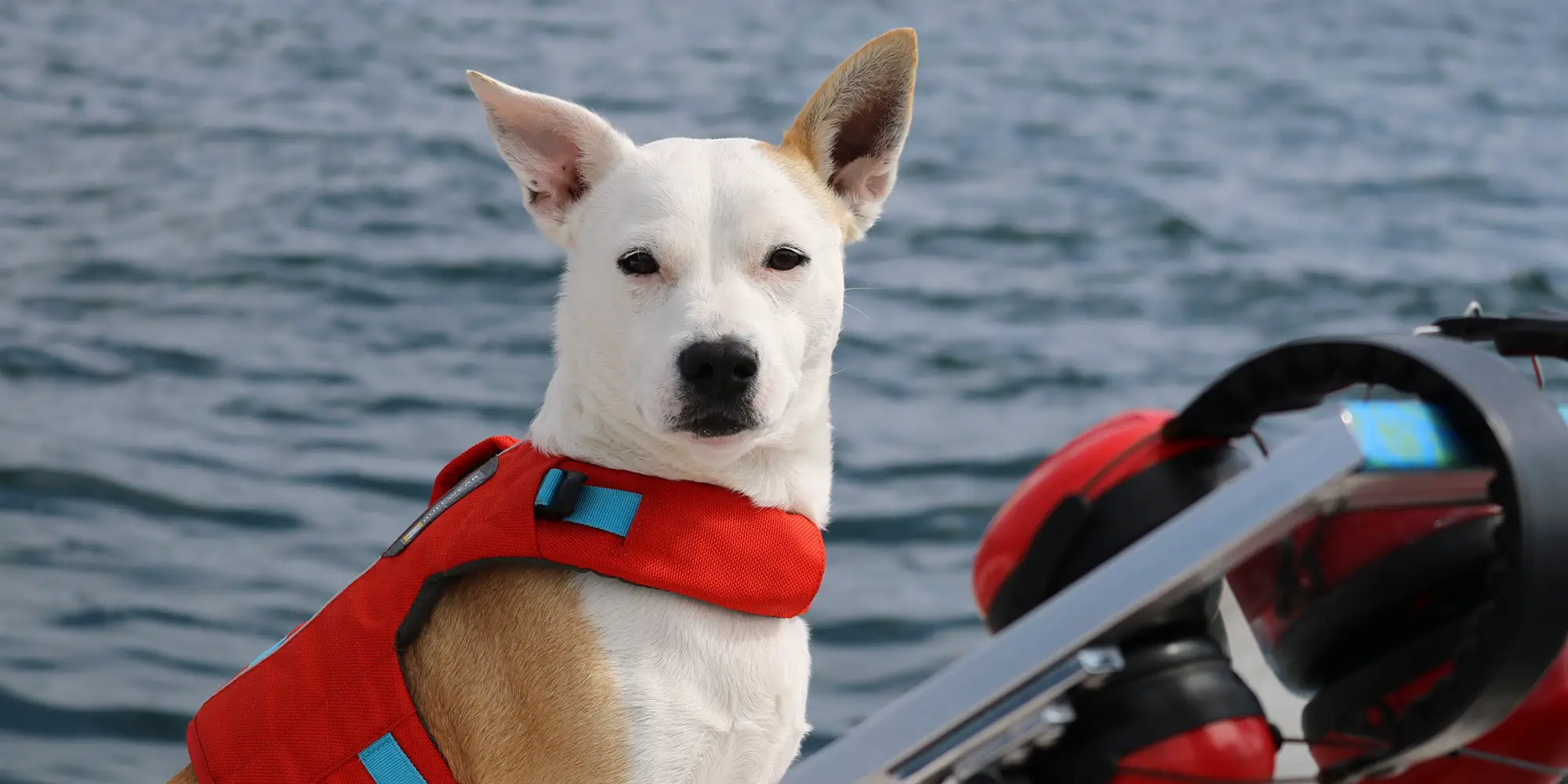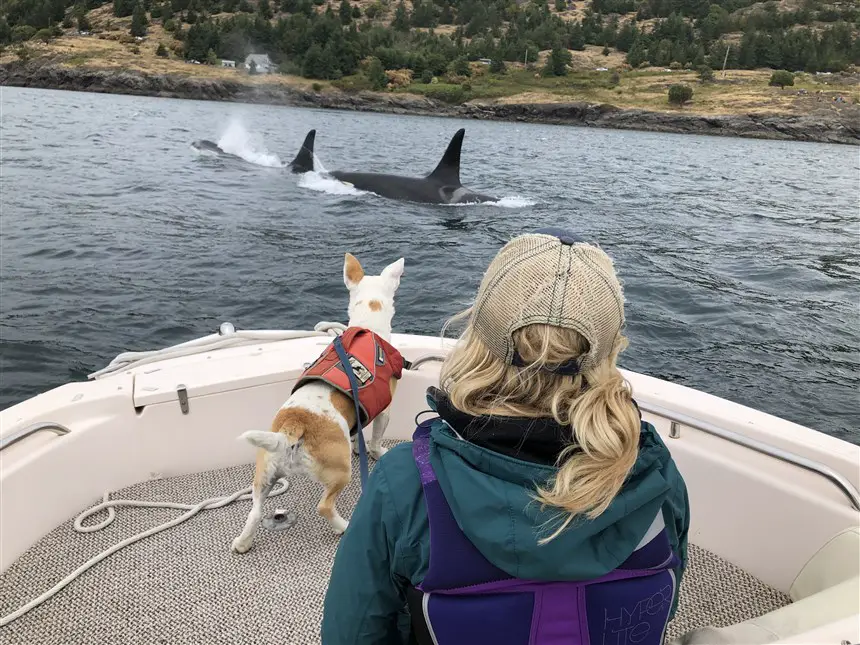This Former Abandoned Dog Sniffs Poop To Help Save Killer Whales
Tags: News

Eba the rescue dog is assisting conservation biologists do research on Southern Resident killer whales off the coast of Washington state.
Eba’s story as we know it began when she was dumped outside a Sacramento animal shelter in California.
Cold, wet, and weighing just 3.5 pounds, the mix breed’s chances of pulling through looked slim. But the brave pup clung to life. And then, after nearly getting lost while living in a foster home, she was adopted by Dr. Deborah Giles.
Dr. Giles is a Southern Resident killer whale researcher in the Center for Conservation Biology at the University of Washington. She studies the animals off Washington state’s San Juan Islands as well as the Canadian Gulf Islands.
Dr. Giles deduced by Eba’s energy that she had the potential to be a working dog and arranged for her to be enrolled at Conservation Canines.
Conservation Canine is a program which trains rescue dogs to identify various wildlife feces.
Eba was trained for a couple of weeks to associate the smell of orca feces with a toy before being taken out on a boat.
And by day two, the now 30-pound rescue dog had identified her first killer whale droppings.
These findings enable scientists to analyze things such as stress levels, possible pregnancies, eating habits and pollutant levels.
Hey, are you on Instagram? Check out the official Truth Theory Instagram page HERE, we upload new content every day.
There are reportedly only 74 individuals of this species of whale in the area – which makes it difficult to find them.
But that challenge is lessened by Eba’s powerful nose.
“That’s where the dog comes in because they can smell these things from a mile away – literally a mile away,” Dr Giles said.
“The dog is on the front of the boat just kind of hanging out and sniffing. And then when she gets a hit, she has a pretty massive behavior change.

“As we pass through the center of scent cone, which is the strongest portion of that smell, she’ll whip around to the side of the boat to tell us, ‘Hey, wait a minute, you’ve passed it.’
“That’s when we turn into the wind. Then it might be a series of zigzags back and forth. It’s amazing the dogs can do this work.”
Images Credit: Dr. Deborah Giles / Courtesy of UW/Center for Conservation Biology & Conservation Canines at UW
Leave Comment: